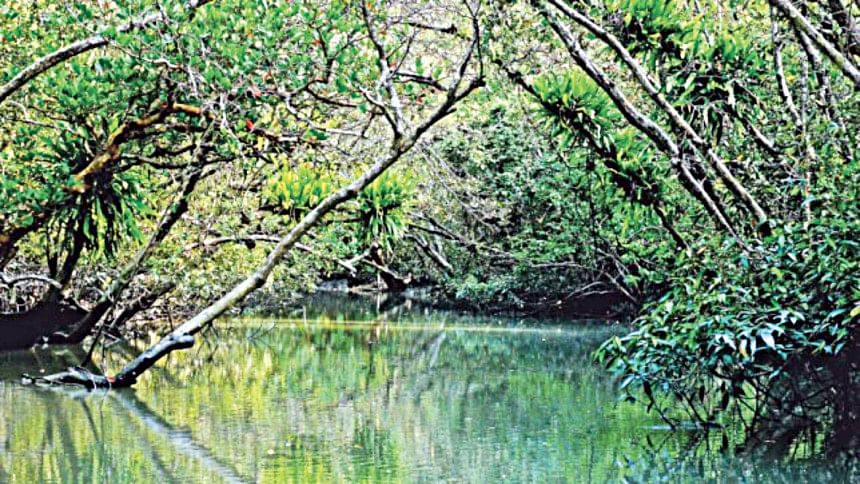Our Hero, The Sundarbans

The moment I hear the name Sundarbans, the image of a lush green mangrove forest and a Royal Bengal Tiger majestically taking a stroll flashes before my eyes. The name itself is enough to elicit in us a combined feeling of thrill and pride which stem from the fact that the Sundarbans is a UNESCO World Heritage Site, a Ramsar site and the largest mangrove forest in the world.
And as for students like me who are studying the environment, the name evokes veneration and profound gratitude. After all, just like a mother sacrificing herself to protect her child, this forest protects the millions of Bengalis living in the coastal districts from the onslaught of violent cyclones and tidal surges which ravage our country almost every year, the most recent of which is the super cyclone Amphan.
Due to its unique geographical setting, Bangladesh is one of the most disaster-prone countries in the world. In coastal areas, deadly cyclones are accompanied by tidal surges which can reach a height of several metres.
But the Sundarbans, like the fortified wall of a castle, stands between our western coastal districts and the Bay of Bengal as the sole form of defence against these cyclones. This natural barrier not only reduces the intensity of the cyclones via surface roughness but also weakens the tidal surges through the dissipation of wave energy due to the unique structures of its mangrove vegetation. The mangroves also minimise the saline water intrusion and reduce the risk of coastal erosion by trapping and stabilising the soil sediments. Recent studies also suggest that mangroves enhance vertical land development through sedimentation processes.
Apart from disaster protection, the Sundarbans is the largest carbon sink (absorbing more carbon dioxide than it emits) in Bangladesh and plays a role of utmost importance in mitigating greenhouse gas emissions. It is the home to a treasure trove of unique wildlife, including a few globally endangered species and is the source of livelihood for thousands of people in the coastal districts.
Upon exploring the Sundarbans as a part of my field study, I was grief-stricken after witnessing how uncontrolled human intervention had led to its over-exploitation and mass deforestation.
Right now, what our precious mangrove forest needs is the time to heal herself as she was badly damaged by the super cyclonic storm Amphan.
There is no alternative to the Sundarbans. Sustainable consumption and minimal human intervention is the only way to save our beloved mangrove, our silent guardian.
References
1. Neumann, C.J. (1993). Global overview. Chapter 1, Global guide to tropical cyclone forecasting. WMO, Geneva.
2. Fritz, H.M. and Blount, C., PROTECTION FROM CYCLONES. Coastal protection in the aftermath of the Indian Ocean tsunami: What role for forests and trees?
H. Rainak Khan Real has stopped searching for the elixir of eternal youth, instead he has begun searching for the potion that can slow down the time. Send him clues at [email protected]

 For all latest news, follow The Daily Star's Google News channel.
For all latest news, follow The Daily Star's Google News channel. 



Comments